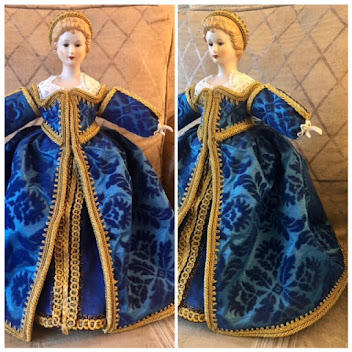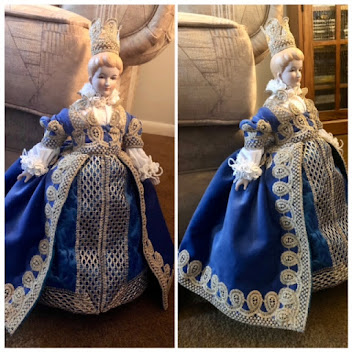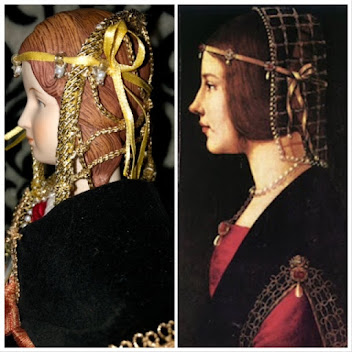 |
| By Hans Holben the Younger |
Weaving silk white bands and formulating a way of making the metallic hooks on the end that stab and hold up the skirts. These "white bands" are a mystery to most costumers as to the use and purpose. In period portraits from approximately 1500-1540, we see white bands on noble and gentle woman alike.
I am going with the theory you see in the drawing. Its a way of holding up skirts to show linings and would be another great way of showing conspicuous consumption of fabrics. So weaving a way to make an even length of band to try out pinning and use techniques on these unusual accessories.
Looking at learning fingerloop braiding as it would be appropriate
for my persona living in England. So having made a real mess of the first time, consulting a local weaving expert to better learn it and make a functional knotted mess instead of a rats nest. So hoping to make laces for gowns with points is the end goal.
Thinking more about period head wear, wondering how a gabled headdress class would go eventually? I found someone online is thinking similarly that structured headdresses evolved from pinning techniques of veils. Sumptuous outer fabrics added that evolved to solid forms of structure within and sewed to place. This is comfortable head wear, in my opinion. The lappets can be pinned for different looks, even in the structured later style. I know some folks hold contempt for a headdress that looks like a gable roof. However fashion is a winding trail with unusual
 |
| Beaded Coif |
 |
| Beaded Embroidered Frontlet |
 |
| Silk Organza Partlet edged in Velvet |
So very happy with tying up loose projects today. Wondering about time to write up documentation between appointments this week. Have interviews and hope to land that big fish I kept speaking about last post. In the meantime Its good to be busy and to finish pending projects. Hoping for continued productivity.
Keeping out of trouble and off the streets,
Mairin






No comments:
Post a Comment